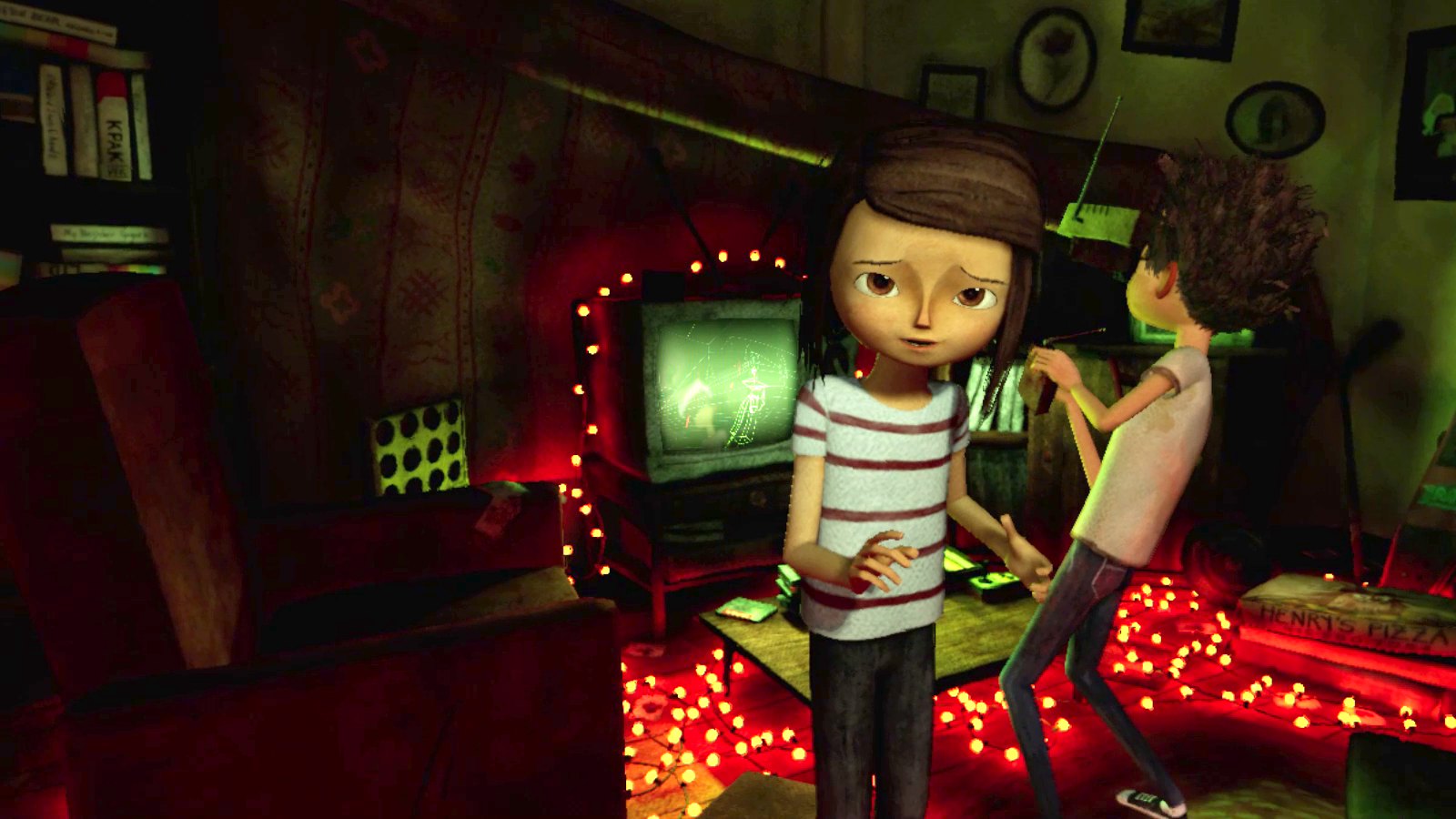Quill and Wolves in the Walls
Quill and Wolves in the Walls
By Director Pete Billington
Back in 2015 we received our first pair of touch controllers. They were early engineering samples, the sensors were exposed, and no software really existed to make use of them. At the time the studio was in early development on a project called Dear Angelica, and Wolves in the Walls was in pre-pre production, we were really just experimenting with different ideas at that point. We built a virtual flashlight and were using the controllers to light up a dark attic.
Since we only had one set of controllers, it was not uncommon for developers to share them. Inigo Quillez would take the left controller to develop a piece of experimental VR illustration software he was dreaming up. It would be the cornerstone of the Dear Angelica project and would eventually be called “Quill” after it’s creator.
QUILL in PRE-PRODUCTION
I watched Quill grow up. From its unstable toddler years to its awkward braces-wearing teens,
Quill was becoming increasingly powerful. It wasn’t long before the concept artists working on Wolves started playing with it. I knew that it was going to be powerful when they were all coming in early to sketch in Quill before work.
We were constantly looking for workflows that helped us recapture proven techniques that we had lost in translation from other mediums. One of the most lamentable losses was the ability to successfully storyboard for VR projects. The traditional 2D workflow just didn’t work, and worse, it sometimes led us down the wrong path.
Our pipeline had become a hybridized game/film approach. With a combination of greyboxing, previz modeling and concept art. We stumbled into a process called Protoviz, which worked but is a longer format, requiring multiple engineers and artists. We had no real replacement for the quick gestural sketches that story art provides.
One day, our art director Goro Fujita did a quick sketch of a complex scene entirely in quill. It was a difficult concept to translate visually. The sort of idea that only works in virtual reality. It was incredible. He was able to represent the idea within minutes, and it was already in spatial context. The same workflow would have required multiple artists working multiple days to validate and review. We got very excited about the potential of Quill in pre-production.
Things began to accelerate. We were discovering aspects of VR design that could not be easily prototyped. One idea in particular, something we refer to as Emotional POV, was almost impossible to visualize in a traditional way. The idea that the audience sees the world the way the our main character Lucy feels the world. It means that the virtual space may warp and stretch when she’s scared, or that her Mom might become 10 feet tall when she’s upset, or that Dad appears 200 feet away when he’s only across the room. This is something unique to VR because it only works in a shared construct. Quill allowed us to immediately feel the emotion of a space, this granted us the ability us to push these moments much deeper into the subconscious..
QUILL in PRODUCTION
By the time Dear Angelica released we were convinced that Quill was an elegant production-level tool capable of creating beautiful art. But we weren’t sure how we could use it as a production tool for Wolves. The project has a very deliberate watercolor style that calls back to it’s storybook roots.
As the story developed a few scenes emerged that demanded Quill be at the center of their construction. The first, called “8-bit Inception” is a virtual video game within a virtual experience. “WolfSlayer” is a Quill love letter to nostalgic vector-graphic games like Battlezone and Asteroids. It was conceived and built entirely in Quill. The biggest benefit to this workflow was that the entire game could be designed from the point of view of the player. Every element could be scaled and positioned exactly like the audience would experience it.
The animation workflow in Quill also lent itself wonderfully to the design of Wolfslayer. We could use frame-based animation to simulate the state machine and even animate the effects, lighting bolts and laser blasts to simulate gameplay. The player’s sword could even be wielded virtually by using the grab tool. It was an amazing way to prototype the entire scene.
After the success of Wolf Slayer we wanted to look at how Quill could play and even bigger role in Wolves. Towards the end of Part 1, when Lucy has lost confidence in herself, the Wolves actually come out of the walls. We thought for a long time about how best to represent this moment, and what it meant for Lucy emotionally.
Since the audience is literally drawn into the world, we thought that her Emotional POV might take over, and that the Wolves would manifest as scratches and scribbles in one of Lucy’s drawings, only scaled up to world size.
We reached out to Concept Artist and Art Director Carlos Felipe Leon to see if he may be interested in taking on the challenge. It would mean creating an entire production length sequence entirely in Quill. To our delight, Carlos accepted, and we started exploring Lucy’s imagination. What would it mean to be inside her head in this moment of fear?
Carlos responded with an elegantly haunting rendition of Lucy and her family. The wolves feel like therapy drawings, unconstrained, chaotic. Using the Quill animation workflow, the lines of Carlos’ Quill world move and jump, giving it a hand drawn quality that is so often absent from computer generated art.
The result is emotion stripped of its decoration. Raw feeling. We are alone in the dark, reaching out for this little girl, hoping that she pulls us to safety. Carlos was able to be in that space as he was authoring this work. That is the magic of Quill. It puts you inside the art as you make it. It is a direct conduit to the emotional manifestation of space.
The first two chapters of Wolves in the Walls are available to download as Early Access for Oculus Rift on the Oculus Store.








